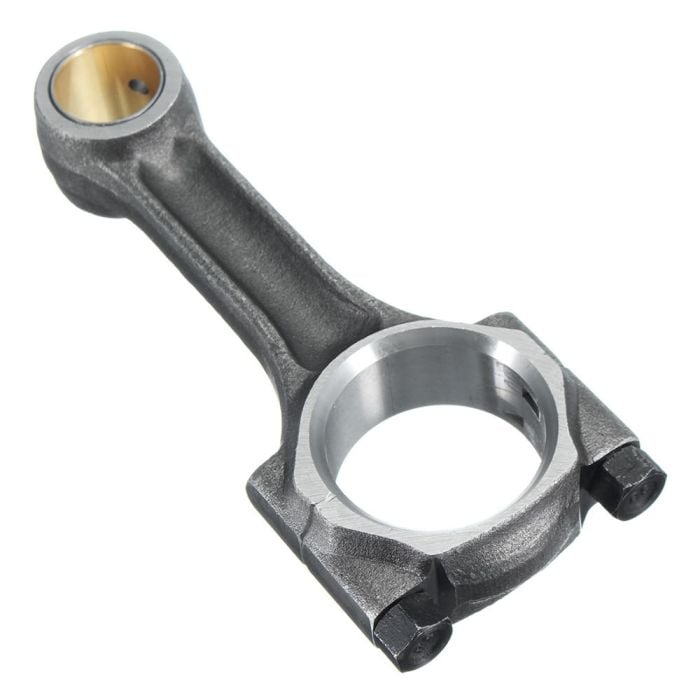How a Clp Engine Can Boost Performance in Different Industries
The development of CLP engines notes a significant shift in functional performance across different markets, driven by their capacity to optimize fuel usage and minimize downtime. As organizations progressively focus on sustainability along with efficiency, the function of CLP engines ends up being even more important.
Introduction of CLP Engines
CLP engines, or Continuous Liquid Propellant engines, represent a substantial innovation in propulsion innovation, especially for area applications. These engines utilize a continuous feed system that enables the continual expulsion of propellant, resulting in enhanced performance and efficiency compared to traditional strong or hybrid propulsion systems. By preserving a constant circulation of fluid propellant, CLP engines can accomplish more specific thrust control, which is essential for maneuvering spacecraft in numerous objective scenarios.
The layout of CLP engines integrates advanced products and ingenious fuel monitoring systems. clp engine. This leads to reduced weight and increased integrity, crucial aspects for long-duration area missions. The continuous operation minimizes the risk of burning instability, an usual difficulty in traditional rocket engines.

Benefits in Manufacturing
The manufacturing of Constant Fluid Propellant (CLP) engines provides numerous remarkable benefits that boost both performance and cost-effectiveness. Among the primary benefits is the structured manufacturing process, which reduces the complexity related to traditional propulsion systems. By utilizing liquid propellant, suppliers can attain better accuracy in engine efficiency, leading to optimized energy output and decreased waste.
Furthermore, CLP engines promote a greater degree of modularity, permitting for less complicated assimilation right into various manufacturing lines. This adaptability can considerably reduce lead times and enhance general functional flexibility. Using CLP innovation also often tends to decrease the requirement for substantial upkeep as a result of less moving components, which equates right into minimized downtime and operational costs.

Applications in Logistics
Leveraging Continuous Liquid Propellant (CLP) engines in logistics provides considerable benefits in functional performance and integrity. These engines provide a robust solution for various transportation needs, enabling the seamless movement of items throughout vast distances. The fundamental style of CLP engines enables for constant power outcome, which equates into smoother and a lot more foreseeable transportation routines.
One of the key applications of CLP engines in logistics is in heavy-duty freight transport, where they can drive both ground and aerial cars. Their capability to preserve high Visit Your URL efficiency under differing lots problems makes sure that shipment timelines are fulfilled, therefore boosting consumer complete satisfaction. Furthermore, CLP engines can be integrated right into automated logistics systems, helping with real-time tracking and optimizing path preparation.
Moreover, the durability of CLP engines decreases maintenance downtime, permitting logistics companies to optimize their operational capabilities. This is especially helpful in warehousing procedures, where performance in dealing with and delivering items is critical. As logistics remains to advance, the assimilation of CLP engines represents a forward-thinking approach that not just enhances efficiency but also supports the sector's growing demands for dependability and speed.
Impact on Power Performance
How do Continuous Liquid Propellant (CLP) engines boost energy performance in transport? CLP engines utilize a regular flow of liquid fuel, maximizing combustion processes and preserving a stable thrust result. This layout reduces power losses connected with conventional combustion engines, where gas distribution can vary and bring about ineffectiveness.
The continuous procedure of CLP engines enables an extra effective thermal cycle, causing higher details impulse compared to conventional engines. clp engine. This converts to minimized gas usage for the exact same amount of job done, significantly decreasing functional costs across different transport industries, consisting of aeronautics and maritime industries
Additionally, the ability of CLP engines to preserve optimum efficiency under differing load problems reduces the demand for frequent velocity and deceleration, even more boosting gas efficiency. Improved power efficiency not only adds to cost savings but likewise results in reduce greenhouse gas discharges, lining up with worldwide sustainability goals.
Future Trends and Innovations
Emerging advancements in Continuous Fluid Propellant (CLP) engine modern technology assurance to change the landscape of transport effectiveness and sustainability. As markets pivot toward greener alternatives, CLP engines stand at the center, incorporating ingenious materials look at these guys and design methodologies that boost efficiency while lessening environmental impact.
One of one of the most appealing patterns is the adoption of crossbreed systems that incorporate CLP engines with eco-friendly power sources. This synergy can optimize gas usage and minimize emissions, aligning with global sustainability objectives. Developments in computational fluid characteristics (CFD) are assisting in the design of even more aerodynamically efficient engines, leading to reduced drag and enhanced fuel effectiveness.
Additionally, the growth of wise surveillance systems is readied to boost operational performances. These systems take advantage of information analytics and IoT innovation to maximize engine efficiency in real-time, ensuring that the engines run within their most efficient specifications.
As research continues to discover alternative propellant solutions-- such as biofuels and artificial gas-- the future of CLP engines looks appealing. By harnessing these innovations, markets can not only enhance their efficiency yet likewise add considerably to a cleaner, more lasting future in transportation.
Conclusion
In verdict, CLP engines represent a significant advancement in performance across numerous click now markets. Their ability to optimize fuel consumption and lower functional prices, incorporated with a constant feed system, enhances power outcome and functional dependability. The combination of innovative materials and less moving components decreases maintenance requirements, while placement with sustainability goals positions CLP engines as an essential technology for the future. Proceeded technology in this field guarantees more improvements in efficiency and ecological performance.
Comments on “Find a cost-effective clp engine for industrial applications.”